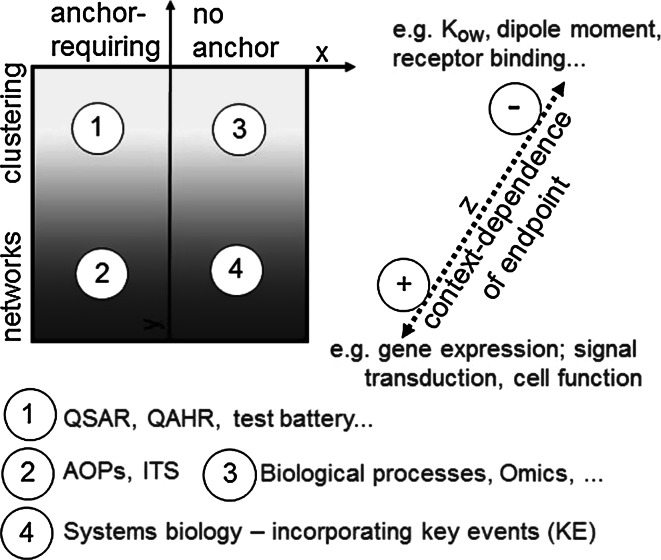Fig. 4.
Anchor and context dependence of different chemical assessment methods. Different approaches for hazard testing and classification may be distinguished by their dependence on anchoring (x axis), i.e. relating the results to other information not delivered by the test method. For instance, most classical assays and models (QAHR/QSAR) require high numbers of already known compounds for calibrations. In contrast to this, testing of biological processes (e.g. neurite growth) does not necessitate such information. Approaches may also be distinguished (y axis) by the extent to which they use networks or simple clustering approaches to categorize information form multiple sources. A third dimension (z axis) distinguishes methods by the context dependence of the endpoint measured. For instance, receptor binding constants or the polarity of a compound would be only to a small extent dependent on the assay used. In contrast to this, gene expression changes triggered by a compound will depend on the cell type, the culture conditions and many other factors

